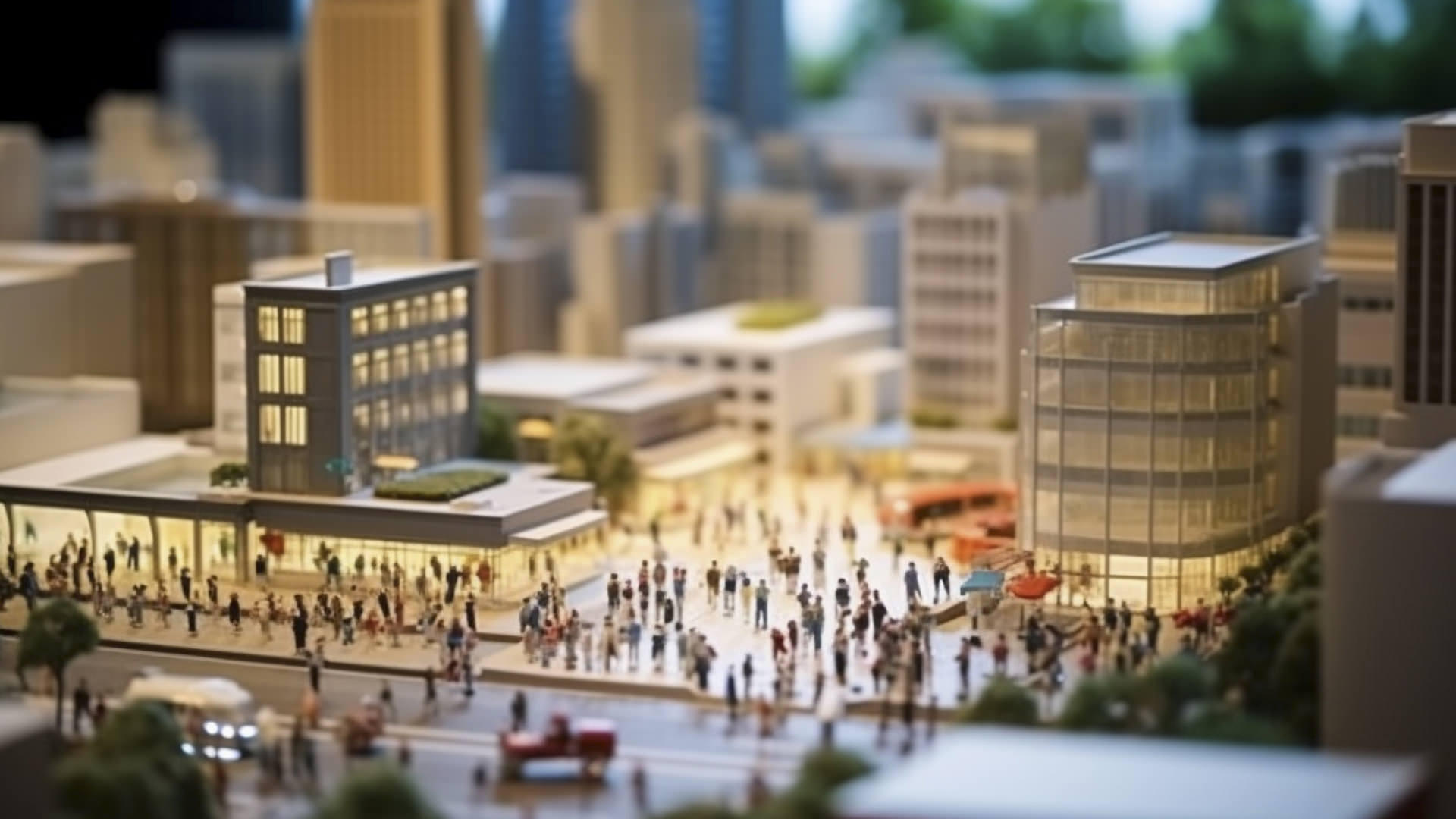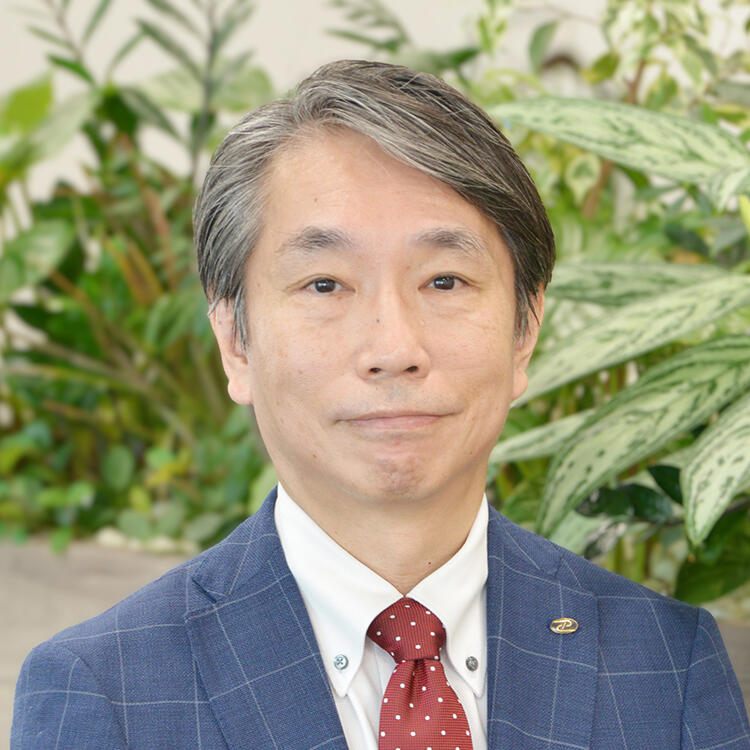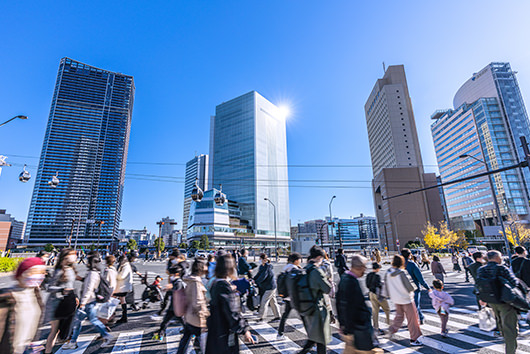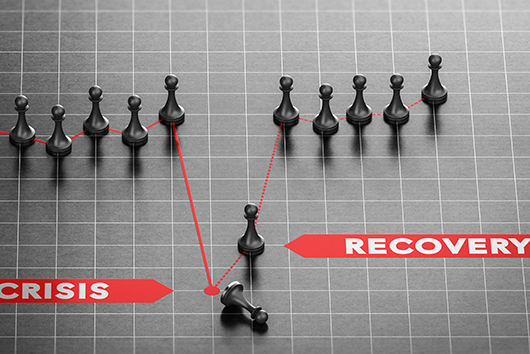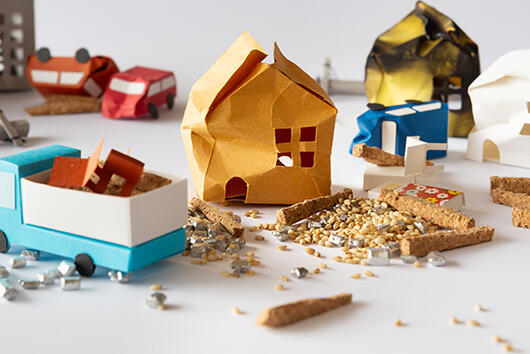Since Sendai Framework for Disaster Risk Reduction 2015-2030, adopted at the United Nations World Conference on Disaster Risk Reduction, called for "strengthening resilience against disasters," resilience has become an important keyword in disaster prevention. We talked to with Takashi ITO, General Manager of the Disaster Prevention Dept., Digital Service Div., about what resilience is, which is said to be a step forward from conventional thinking of disaster prevention and reduction, and how it can be realized.
INDEX
- What is disaster resilience?
- Background to the launch of disaster resilience
- Key points for disaster resilience
- Disaster resilience should be considered from two perspectives: "hard" and "soft"
- Necessary efforts by the national and local governments
- What the private sector needs to do
- PACIFIC CONSULTANTS' Initiatives
- Public and private sectors working together to create a resilient society
What is disaster resilience?
Resilience is an English word that means "elasticity" or "the ability to quickly recover from illness or misfortune."
It has often been used in the fields of psychology and health, but "strengthening resilience to disasters" was clearly stated in "the Sendai Framework for Disaster Risk Reduction 2015-2030", adopted at the Third United Nations World Conference on Disaster Risk Reduction held in Sendai in 2015, and since then, it has been used as an important keyword in disaster prevention.
Disaster resilience refers to "the ability of systems, communities, individuals and societies to maintain basic functions even in adverse circumstances, have a strong core that can resist the adverse effects of disasters, and recover resiliently." *1
The Sendai Framework also explicitly states the concept of "Build Back Better (BBB)," which is a way of thinking that calls for "building safer towns and cities that are one step ahead of the past, so that damage from disasters is not repeated."
*1 "Sendai Citizen Framework for Disaster Risk Reduction 2015-2030" by Japan CSO Network for Disaster Risk Reduction (JCC-DRR)
Background to the launch of disaster resilience
The background to the launch of the concept of "disaster resilience" was Great East Japan Earthquake that occurred in 2011.
At the Second United Nations World Conference on Disaster Risk Reduction held in Kobe in 2005, "the Hyogo Framework for Action 2005-2015" was adopted, which set goals and guidelines for disaster prevention and reduction to be achieved during this period. Based on this, countries around the world have made progress in reducing risks by strengthening disaster risk management capabilities, but during this time, major disasters such as the Great East Japan Earthquake have occurred, causing serious threats and damage. The damage was particularly concentrated on women, children, and the socially vulnerable, and the damage that disasters caused to daily life and economic activity has also become more severe.
"The Sendai Framework for Disaster Risk Reduction 2015-2030", which was adopted in this context, takes conventional disaster prevention and reduction a step further. It clarifies the importance of not only fighting disasters and reducing losses, but also emphasizing the importance of accepting disasters and responding resiliently as a society, placing greater emphasis on protecting people's lives, livelihoods, and health, and of minimizing losses to the various assets of people, companies, communities, and countries, and enhancing their capacity to recover and rebuild quickly.
Key points for disaster resilience
There are two key points to the new approach to disaster resilience.
One is that it is based on the premise that "unforeseen things can happen."
Conventional disaster prevention and reduction have been considered from the perspective of how to prevent "anticipated damage" and how to minimize it. In other words, the premise was that "if something unexpected happens, there's nothing we can do" and "we don't know what will happen then." However, the Great East Japan Earthquake was exactly what we were faced with when we were faced with something unexpected.
Since it is unexpected, damage is inevitable. With that in mind, we need to think in advance about concrete and flexible responses to minimize the damage and quickly recover from the damage, to take on unexpected situations, to continue social activities as much as possible even in those times, and to ensure rapid recovery and reconstruction.
Another point is that disaster resilience is not something that the national or local governments can do.
Improving society's disaster response capabilities is a task for each and every member of society, and it can only be achieved if the entire society works together. Only when not only the nation and local governments, but also companies, universities, academic research organizations, volunteers, citizen groups, and local communities, each take disaster prevention seriously, consider what they can do, and take the initiative in addressing it can we make society more resilient.
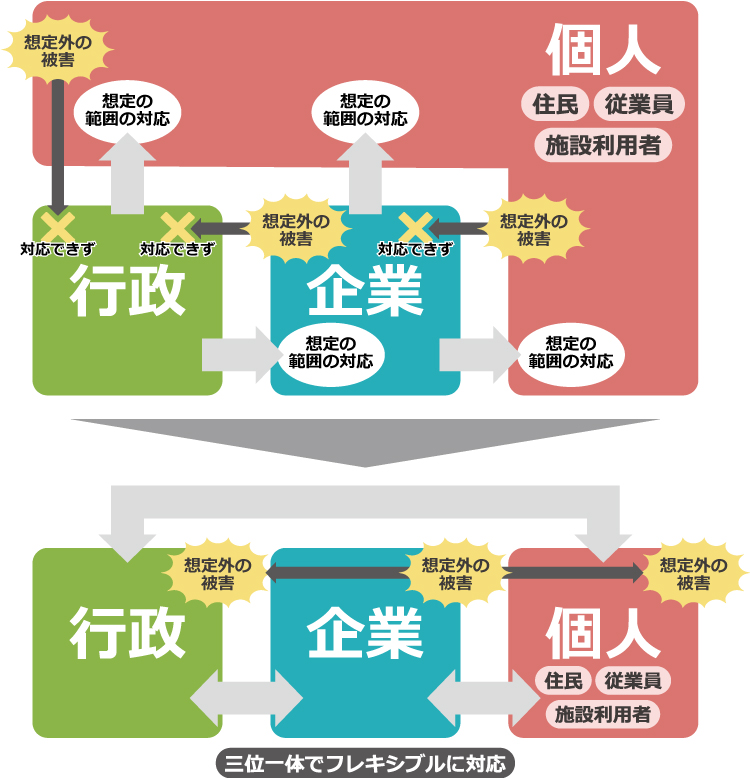
Disaster resilience should be considered from two perspectives: "hard" and "soft"
Disaster resilience cannot end with just strengthening hard structures such as buildings and levees. If we take into account unexpected events, there is a limit to how much hard structure we can strengthen, and a resilient society cannot be realized with that alone. It is essential to strengthen not only hard structures but also soft structures. Taking evacuation shelters as an example, we can think of it as follows.
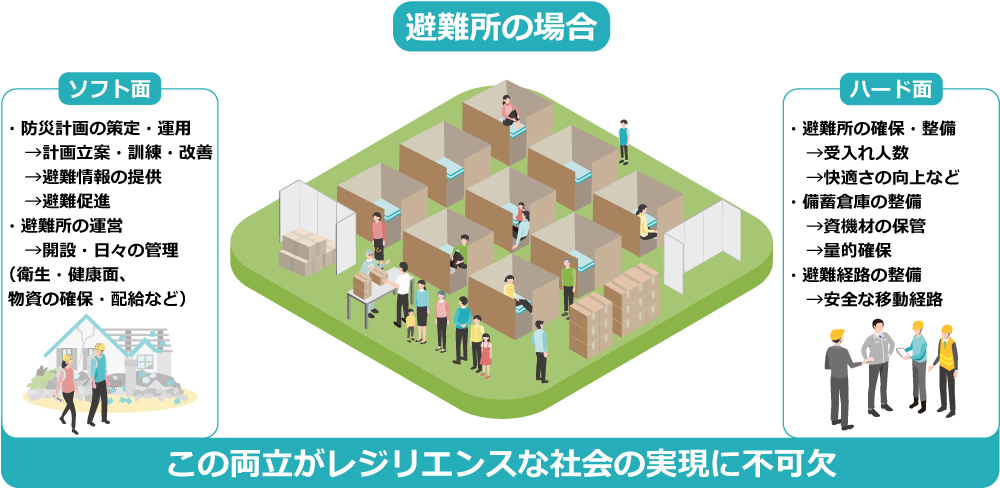
・Hard-side support
First, secure a safe place with the necessary number of evacuees and store the supplies they need for life in evacuation.
In addition, the routes to evacuation shelters must be checked in advance to ensure there are no dangerous areas and prepared accordingly. Furthermore, a place to receive relief supplies that will be collected after a disaster has occurred must also be secured.
・Soft-side support
Even if evacuation shelters are opened, when will evacuation instructions be issued, to whom, and in what form? In that case, where and how many people who need assistance and cannot evacuate on their own will be located, and who will be in charge of guiding them to the evacuation? Without such planning, even if evacuation shelters are in place, they will not be put to practical use.
Similarly, when it comes to relief supplies, it is essential to have a concrete plan for how to disseminate information about what is needed, where to collect the supplies, and how to distribute them. Without such measures, we risk collecting large amounts of unnecessary items, or having supplies that cannot be distributed but end up stuck there.
In fact, evacuation shelters were opened in Noto Peninsula Earthquake that occurred on Jan. 1, 2024, but many problems were highlighted, such as roads being cut off and people being unable to reach the shelters in the first place, widespread water and power outages causing poor living conditions in the shelters, and welfare evacuation shelters for people who need care being unable to open as planned. In addition, the transportation of relief supplies was significantly delayed due to road disruptions, resulting in a situation where the shelters could not function properly.
In order to increase resilience, it is essential to take both hard and soft approaches while considering all possible cases. The same is true when restoring infrastructure or implementing a company's BCP. Hard measures cannot be realized unless they are always combined with soft measures, such as who will operate them and how. A method of thinking called OODA has been attracting attention in this regard.
OODA is a way of thinking that allows for quick decision-making and action.
There are four steps: "Observe," "Orient," "Decide," and "Act," and the acronym OODA is used to refer to these four steps. In the traditional PDCA cycle, you first make a plan to improve the current situation, then execute it, and then verify the results to make improvements. However, OODA is a method of making quick and flexible decisions based on data collected in an ever-changing situation, and can quickly respond to changes caused by external factors. In today's world, which is said to be the VUCA era, there are an increasing number of situations where this type of responsive and flexible way of thinking is required.
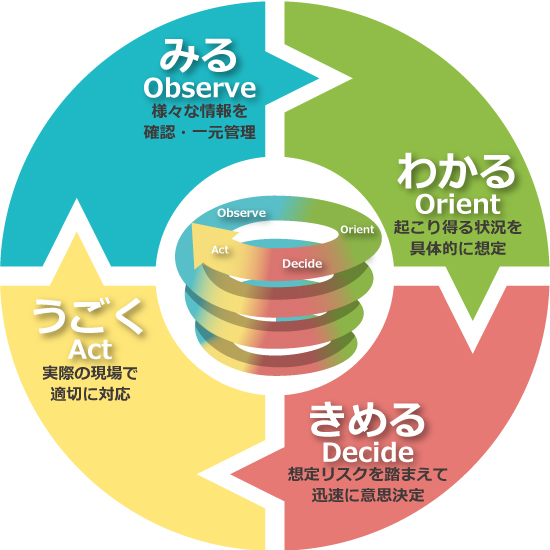
Necessary efforts by the national and local governments
Disaster resilience can only be achieved when everyone in society plays their respective roles.
What is required of the national and local governments is, above all else, to protect the lives of residents. To achieve this, two things are necessary. The first is how to evacuate residents to a safe place when a disaster occurs and how to protect their lives in that place. The second is how to advance support for recovery and reconstruction after the initial emergency response phase of a disaster has passed.
Regarding evacuation, it is necessary to set up evacuation shelters and guide people to them, and a specific plan for receiving relief supplies must be implemented. Regarding recovery and reconstruction, major themes include helping residents rebuild their lives (stabilizing housing and daily life, securing jobs) and restoring infrastructure. In particular, the restoration of roads, bridges, and other infrastructure is directly related to the lives of residents, but it is unrealistic to begin restoration of all infrastructure at the same time. It is necessary to prioritize and make the decision to restore those things that are most important to the lives of residents, and then to devise and implement a specific plan.
What the private sector needs to do
Many private companies are involved in the production of daily necessities, food, medicines, etc., and play an important role in the supply chain. If these companies' activities were to stop, it would have a serious impact on the lives of the people. Effective BCP measures are needed, not just desk plans.
In addition, in the event of a major earthquake, it is necessary to protect the lives and bodies of your employees, and to prepare for them to spend a certain period of time inside the company if it is difficult for them to return home. Furthermore, measures are also needed to assume that visitors who are in the company at the time of the disaster, especially in the case of event facilities, will remain in the facility for a certain period of time. However, at present, there are very few facilities that have taken measures to not only guide visitors to evacuate but also to assume that they will stay there. This is also something that needs to be considered. Announcing that "our facility will protect all customers at all times" will increase the company's social credibility and lead to branding.
PACIFIC CONSULTANTS' Initiatives
As disaster resilience thinking and efforts are becoming increasingly important, we at PACIFIC CONSULTANTS are actively involved in formulating disaster prevention plans and BCPs for various natural disasters, providing disaster prevention education and human resource development, and supporting disaster prevention and response by building disaster prevention operation support systems.
Earthquakes and tsunamis
Development and utilization of tsunami disaster prevention systems and tsunami evacuation simulations. Formulation, verification, and training of evacuation plans. Design, construction, operation, and maintenance of a "disaster prevention information sharing system" that quickly collects and centrally manages disaster prevention-related information in the event of a large-scale earthquake, heavy rain, or other disaster.
Landslides
Predicting the occurrence of landslides and formulating countermeasure plans using ground investigation technology, slope analysis technology, and hydraulic analysis technology. Supporting the construction and operation of a landslide risk assessment system.
River flooding/inland flooding
This initiative aims to improve disaster prevention operations, which are becoming increasingly diverse and complex, from understanding weather and river conditions to responding and taking measures to quickly recover after a disaster. Specifically, this involves the development and provision of digital transformation options, such as automatic detection of dangerous areas, automatic assessment and prediction of the level of danger, and action guidance and remote support based on the results. In addition, the company develops and provides smartphone apps that anyone can use, such as "Doshaburu"*2 and "Shiraberu"*3.
BCP measures for private companies
Promoting support activities to improve the effectiveness of BCP plans through simulation training including supply chains to check whether the plan will function in the event of a disaster. Developing and providing "Emaxien," a disaster response support tool that consolidates information necessary for business continuity in the event of a disaster.
*2 Doshaburu (for general users) / Doshaburu Pro (for business operator and corporations): A service that combines risk assessment information using rainfall information from radar operated by the Ministry of Land, Infrastructure, Transport and Tourism with landslide risk information and topographical information, displays it on a background map, and uses the device's location information to provide users with the information they need directly.
*3 Shiraberu (for general users) / Shiraberu Pro (for business operators and corporations): A service that collects and stores information from all over the country that can be used as a reference for protecting lives from floods, landslides, earthquakes, and tsunamis from open data provided by Ministry of Land, Infrastructure, Transport and Tourism and Tourism and the Geospatial Information Authority of Japan.
Public and private sectors working together to create a resilient society
Disaster resilience is about building a resilient and strong society that can accept disasters and quickly recover and rebuild. It is not something that can be bestowed by someone; each country, local government, private companies, and individuals have their own tasks, and it can only be realized by coming together. It is necessary to take disaster prevention as our own responsibility, to honestly express our opinions on what we want each other to do to create a country and region that is resilient to disasters, and to work together while clarifying each party's role. We, as private consultants, are the hub of this communication, and we believe that we have a large role to play in building a resilient society.
PACIFIC CONSULTANTS' mission is to realize a prosperous life without threats or disparities for the people of the world, to protect the beautiful earth and its environment, and to pass it on to the future. To that end, we consider strengthening disaster resilience both at home and abroad to be an important mission, and through this we will work to build a society where people around the world can live in peace and security.



